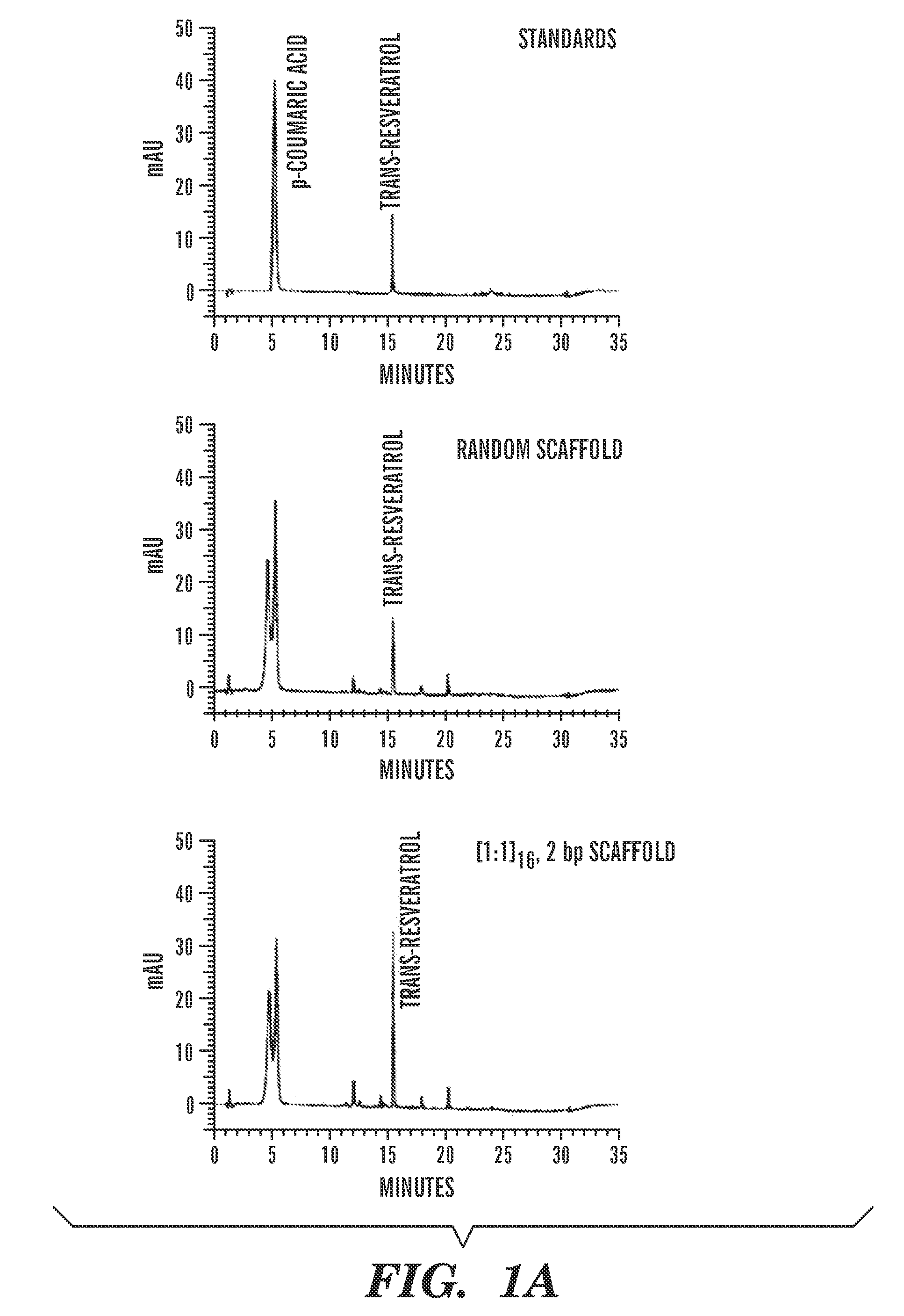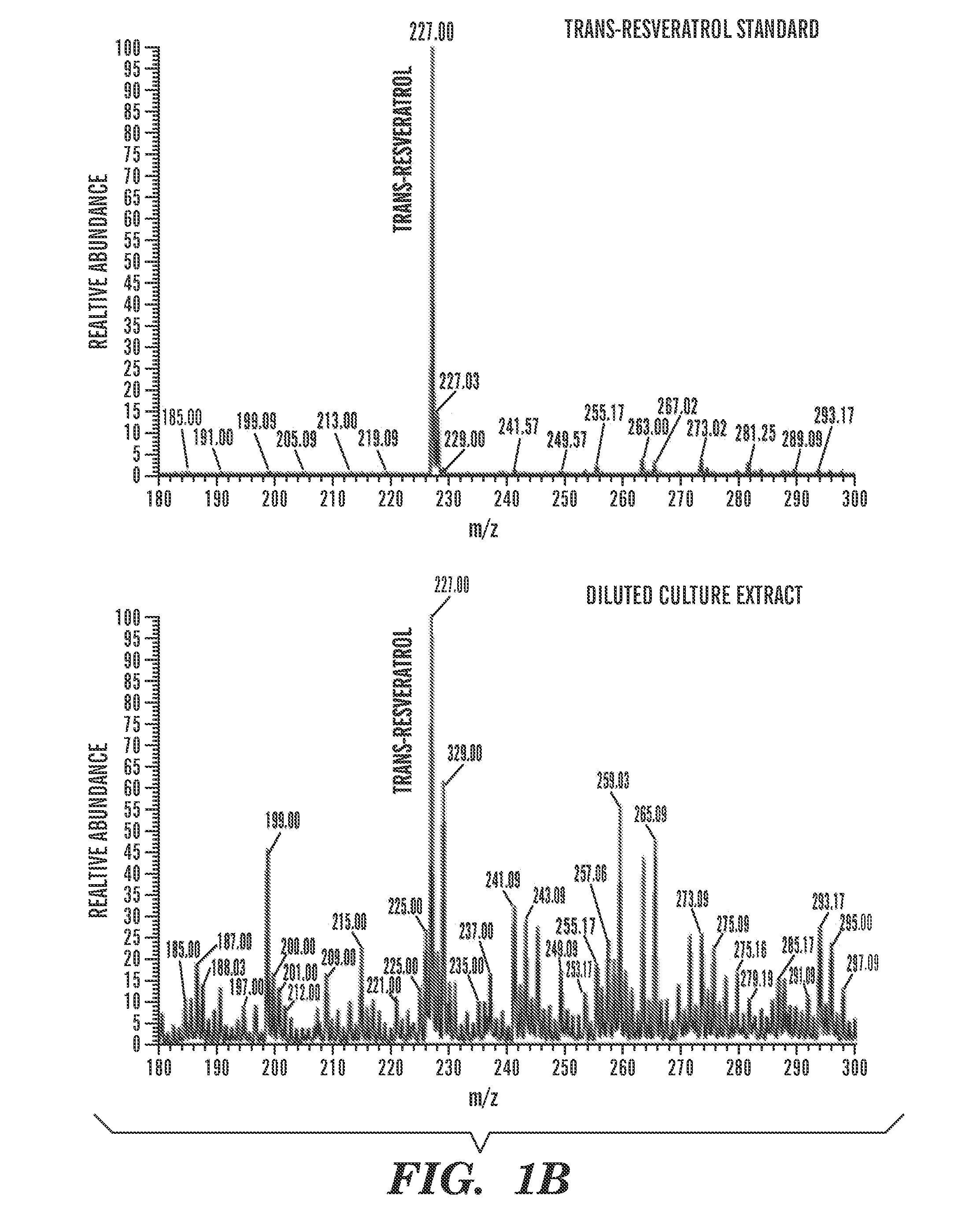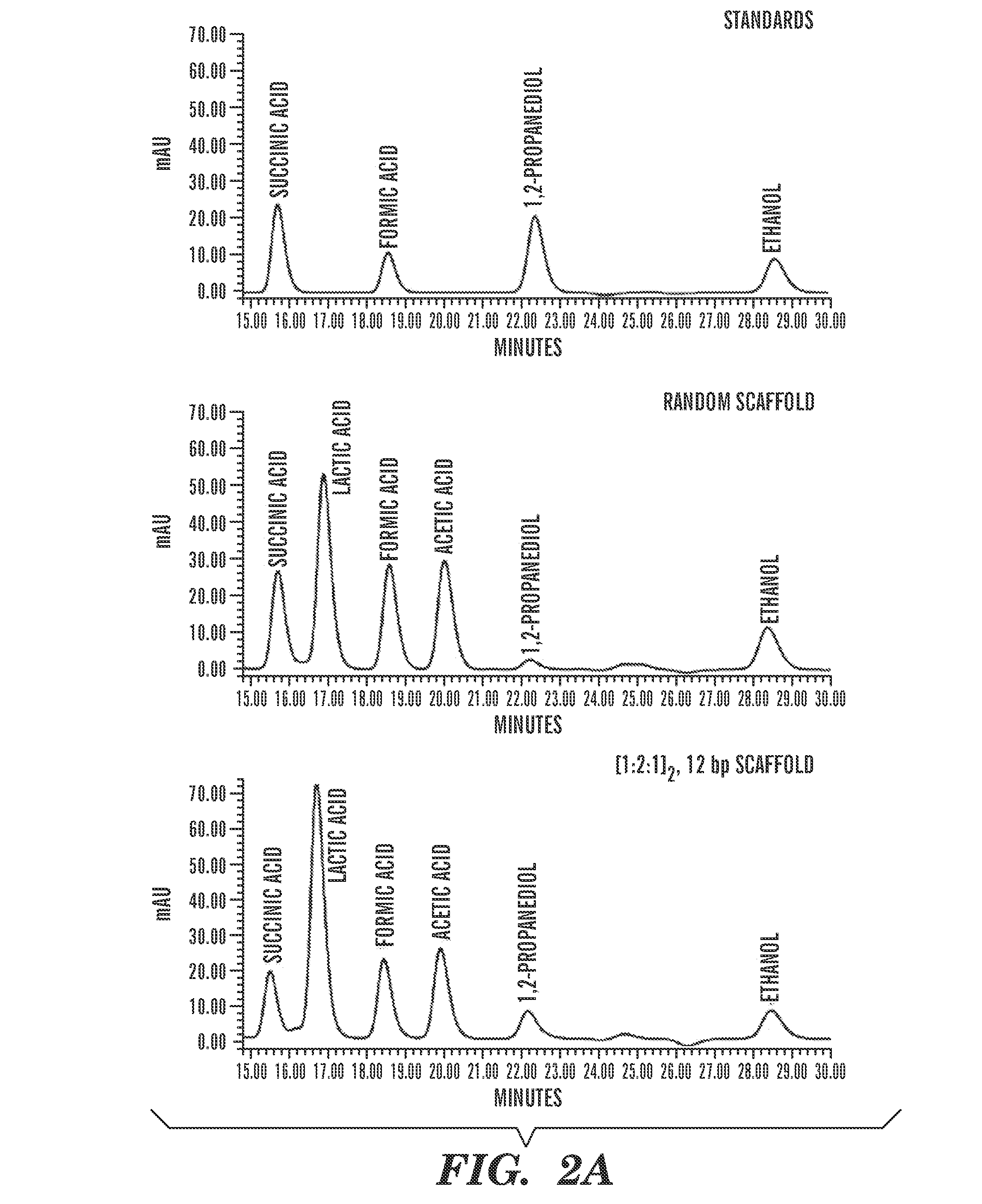Constructs and methods for the assembly of biological pathways
a biological pathway and construct technology, applied in the field of synthetic biological pathway assembly methods, systems and constructs, to achieve the effects of high efficiency, reduced availability of scaffolds, and high local structure prediction
- Summary
- Abstract
- Description
- Claims
- Application Information
AI Technical Summary
Benefits of technology
Problems solved by technology
Method used
Image
Examples
example 1
Targeting DNA In Vitro and In Vivo with ZF Domains
[0091]Plasmid DNA was used as a scaffold onto which cellular proteins of interest could be docked (FIG. 3). This required a method for site-specific targeting of enzymes along the DNA surface. To this end, five different ZF domains (PBSII, Zif268, ZFa, ZFb and ZFc) were used that each comprised three fingers with specificity for unique 9 base-pair DNA sequences (Maeder et al., “Rapid “Open-Source” Engineering of Customized Zinc-Finger Nucleases for Highly Efficient Gene Modification,” Mol. Cell. 31:294-301 (2008); Hurt et al., “Highly Specific Zinc Finger Proteins Obtained by Directed Domain Shuffling and Cell-Based Selection,”Proc. Nat'l. Acad. Sci. U.S.A. 100:12271-12276 (2003); Ooi et al., “Sequence-Enabled Reassembly of Beta-Lactamase (SEER-LAC): A Sensitive Method for the Detection of Double-Stranded DNA,”Biochemistry 45:3620-3625 (2006); Pavletich & Pabo, “Zinc Finger-DNA Recognition: Crystal Structure of a Zif268-DNA Complex a...
example 2
Enhancing Trans-Resveratrol Biosynthesis in the Presence of DNA Scaffolds
[0094]The ability of the ZF domains to assemble the resveratrol (trans-3,5,4′-trihydroxystilbene) biosynthetic enzymes on DNA in the cytoplasm of E. coli was also investigated. The metabolic pathway for this natural plant product has been reconstituted in microbes (Zhang et al., “Using Unnatural Protein Fusions to Engineer Resveratrol Biosynthesis in Yeast and Mammalian Cells,”J. Am. Chem. Soc. 128:13030-13031 (2006); Beekwilder et al., “Production of Resveratrol in Recombinant Microorganisms,”Appl. Environ. Microbiol. 72:5670-5672 (2006); Watts et al., “Biosynthesis of Plant-Specific Stilbene Polyketides in Metabolically Engineered Escherichia coli,” BMC Biotechnol. 6:22 (2006), which are hereby incorporated by reference in their entirety). Production of trans-resveratrol from 4-coumaric acid occurs in two steps in which 4-coumaric acid is converted to 4-coumaroyl-CoA by 4-coumarate:CoA ligase (4CL) and trans-...
example 3
Improving the Metabolic Performance of a Three-Enzyme Pathway for 1,2-PD
[0097]To test the generality of the system, a three-enzyme pathway for producing 1,2-PD from dihydroxyacetone phosphate (DHAP) was tested (FIG. 7A). This pathway was chosen because a biosynthetic route for 1,2-PD in E. coli is well established (Altaras & Cameron, “Metabolic Engineering of a 1,2-Propanediol Pathway in Escherichia coli,” Appl. Environ. Microbiol. 65:1180-1185 (1999), which is hereby incorporated by reference in its entirety). For targeting the 1,2-PD metabolic pathway enzymes to DNA, methylglyoxal synthase (MgsA), 2,5-diketo-d-gluconic acid reductase (DkgA) and glycerol dehydrogenase (GldA) (all from E. coli) were fused to the N-termini of ZFa, ZFb and ZFc, respectively. For the scaffold design, target DNA sequences corresponding to each of the ZF domains were placed on the same plasmid as the ZF-enzyme chimeras. Given that there are approximately 127 plasmids per cell and approximately 5000 ZF-en...
PUM
| Property | Measurement | Unit |
|---|---|---|
| pH | aaaaa | aaaaa |
| pH | aaaaa | aaaaa |
| pH | aaaaa | aaaaa |
Abstract
Description
Claims
Application Information
 Login to View More
Login to View More - R&D
- Intellectual Property
- Life Sciences
- Materials
- Tech Scout
- Unparalleled Data Quality
- Higher Quality Content
- 60% Fewer Hallucinations
Browse by: Latest US Patents, China's latest patents, Technical Efficacy Thesaurus, Application Domain, Technology Topic, Popular Technical Reports.
© 2025 PatSnap. All rights reserved.Legal|Privacy policy|Modern Slavery Act Transparency Statement|Sitemap|About US| Contact US: help@patsnap.com



